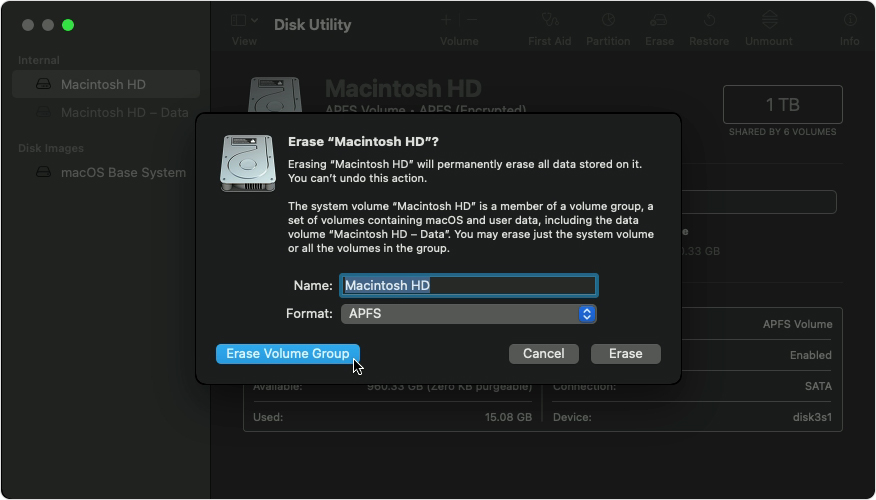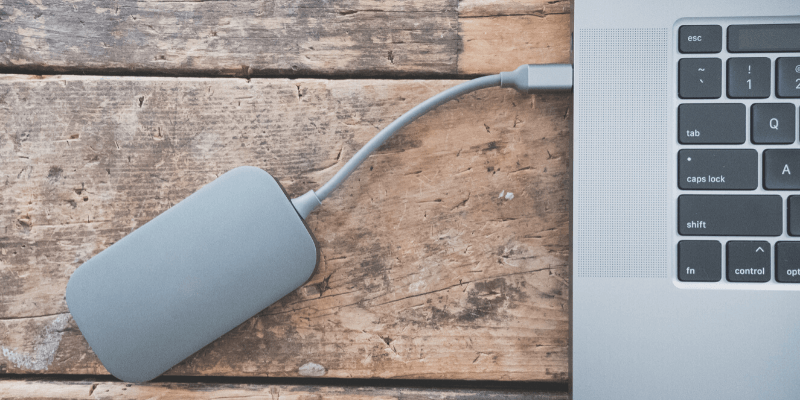Right-click desktop icon. Any external volume connected to your Mac shows up on your desktop. Step 7: Once you hit ‘Erase' button it will prompt you 'Are you sure you want to erase the disk', So, click Erase to Proceed. Now, your external hard drive is formatted and is as good as new. Also Read: Best Free Batch Image Resizer for Mac 2017. How to Erase and Format an External Hard Drives on Windows. Step 1: Go to ‘Start'.
Having an external hard drive is advantageous as you can store tons of data on it. Moreover, it is small, light weight and not attached to your computer. This makes it quite handy and allows you to transfer your data from one computer to another easily.
As you connect your external drive to different computers, it might get infected if the host computer is not secured. And in worst case scenarios, chances are the drive would no longer be recognized by your system.
Well, worry not, we have solution for you. Whenever an external storage device gets infected, it is highly recommended to format the device to make it operable.
In this post, let's talk about how to erase and format external hard drives on Mac and Windows.
Erase and Format External Hard Drive on Mac
Step 1: Open your Mac and connect your external hard drive with it.
How to download minecraft pc on mac. Step 2: Type Disk utility in the spotlight search or click ‘Go' from the top toolbar and select ‘Disk Utility'.
Note: There is another way to open ‘Disk Utility', Go to Finder icon > choose Application > Click on utilities > Disk Utility.
Step 3: Choose the external hard drive from the left-hand side which you would like to format.
Step 4: Select ‘Erase' tab.
Step 5: Select ‘Mac OS Extended (Journaled)' beside ‘Volume Format'.
Step 6: Enter a name for the external hard drive in the Name field.
Step 7: Once you hit ‘Erase' button it will prompt you 'Are you sure you want to erase the disk', So, click Erase to Proceed.
Now, your external hard drive is formatted and is as good as new.
Also Read: Best Free Batch Image Resizer for Mac 2017
How to Erase and Format an External Hard Drives on Windows
Step 1: Go to ‘Start'.
Step 2: Right-Click on Computer. How to code on mac.
Step 3: Select the second option ‘Manage' from the right-click menu.
Step 4: On management window, choose ‘Disk Management' from the storage.
Step 5: Now, select the drive which you would like to erase and format.
Step 6: Right-click on the drive and select ‘Format'.

Step 7: Choose the ‘File System', (you can select ExFAT or FAT32).
How To Erase Internal Hard Drive Mac
Also Read: How to Recover Permanently Deleted Files in Windows 10
Note: Make Sure, you do not 'Perform a quick format' as it doesn't erase the entire data on drive.
Apple Erase Hard Drive
Step 8: Hit ‘OK'. Your machine will prompt you to confirm. After confirmation, your drive will start formatting.
Note: Be patient while formatting your drive, as it might take a bit longer depending upon the size.
Formatting your external hard drive will erase all data available on the drive. In case if you're formatting a drive that you have used before, don't forget to copy important files you might require in future.
These steps apply only to Mac computers with an Intel processor. The steps to erase a Mac with Apple silicon are different.
Before erasing your Mac
- Make a backup of any files that you want to keep. Erasing your Mac permanently deletes its files.
- If you want to restore your Mac to factory settings, such as to prepare it for a new owner, first learn what to do before you sell, give away, or trade in your Mac. Then erase your Mac as the final step.
Use Disk Utility to erase your Mac
- Start up from macOS Recovery: Turn on your Mac, then immediately press and hold these two keys until you see an Apple logo or other image: Command (⌘) and R.
- If asked, select a user you know the password for, then enter their administrator password.
- From the utilities window, select Disk Utility and click Continue.
- Select Macintosh HD in the sidebar of Disk Utility. Don't see Macintosh HD?
- Click the Erase button in the toolbar, then enter the requested details:
- Name: Macintosh HD
- Format: APFS or Mac OS Extended (Journaled), as recommended by Disk Utility
- Click Erase Volume Group. If you don't see this button, click Erase instead.
- If asked, enter your Apple ID. Forgot your Apple ID?
- After the erase is done, select any other internal volumes in the sidebar, then click the delete volume (–) button in the toolbar to delete that volume.
Disregard any internal volume named Macintosh HD or Macintosh HD - Data, as well as any volumes in the External and Disk Images sections of the sidebar. - Quit Disk Utility to return to the utilities window.
- If you want to start up again from the disk you erased, select Reinstall macOS in the utilities window, then click Continue and follow the onscreen instructions to reinstall macOS.
If you don't see Macintosh HD in Disk Utility
Your built-in startup disk should be the first item listed in the Disk Utility sidebar. It's named Macintosh HD, unless you changed its name. If you don't see it there, choose Apple menu > Shut Down, then unplug all nonessential devices from your Mac and try again.
If your disk still doesn't appear in Disk Utility, or Disk Utility reports that the erase process failed, your Mac might need service. If you need help, please contact Apple Support.

Step 7: Choose the ‘File System', (you can select ExFAT or FAT32).
How To Erase Internal Hard Drive Mac
Also Read: How to Recover Permanently Deleted Files in Windows 10
Note: Make Sure, you do not 'Perform a quick format' as it doesn't erase the entire data on drive.
Apple Erase Hard Drive
Step 8: Hit ‘OK'. Your machine will prompt you to confirm. After confirmation, your drive will start formatting.
Note: Be patient while formatting your drive, as it might take a bit longer depending upon the size.
Formatting your external hard drive will erase all data available on the drive. In case if you're formatting a drive that you have used before, don't forget to copy important files you might require in future.
These steps apply only to Mac computers with an Intel processor. The steps to erase a Mac with Apple silicon are different.
Before erasing your Mac
- Make a backup of any files that you want to keep. Erasing your Mac permanently deletes its files.
- If you want to restore your Mac to factory settings, such as to prepare it for a new owner, first learn what to do before you sell, give away, or trade in your Mac. Then erase your Mac as the final step.
Use Disk Utility to erase your Mac
- Start up from macOS Recovery: Turn on your Mac, then immediately press and hold these two keys until you see an Apple logo or other image: Command (⌘) and R.
- If asked, select a user you know the password for, then enter their administrator password.
- From the utilities window, select Disk Utility and click Continue.
- Select Macintosh HD in the sidebar of Disk Utility. Don't see Macintosh HD?
- Click the Erase button in the toolbar, then enter the requested details:
- Name: Macintosh HD
- Format: APFS or Mac OS Extended (Journaled), as recommended by Disk Utility
- Click Erase Volume Group. If you don't see this button, click Erase instead.
- If asked, enter your Apple ID. Forgot your Apple ID?
- After the erase is done, select any other internal volumes in the sidebar, then click the delete volume (–) button in the toolbar to delete that volume.
Disregard any internal volume named Macintosh HD or Macintosh HD - Data, as well as any volumes in the External and Disk Images sections of the sidebar. - Quit Disk Utility to return to the utilities window.
- If you want to start up again from the disk you erased, select Reinstall macOS in the utilities window, then click Continue and follow the onscreen instructions to reinstall macOS.
If you don't see Macintosh HD in Disk Utility
Your built-in startup disk should be the first item listed in the Disk Utility sidebar. It's named Macintosh HD, unless you changed its name. If you don't see it there, choose Apple menu > Shut Down, then unplug all nonessential devices from your Mac and try again.
If your disk still doesn't appear in Disk Utility, or Disk Utility reports that the erase process failed, your Mac might need service. If you need help, please contact Apple Support.
Learn more
Clear system junk mac. For more information about using Disk Utility, see the Disk Utility User Guide.

